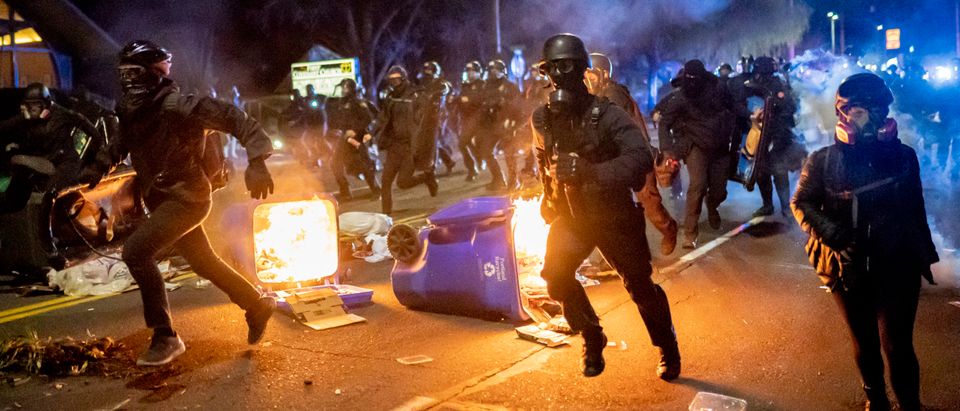The FBI released the Uniform Crime Report which showed an abrupt rise in crime. It was hardly startling to those reading or watching the news. The report showed a 29 percent jump in murders in 2020. It is reportedly the largest increase since nationwide records began in the 1960s. That’s got gun control proponents banging the same drum: more guns mean more crime.
That’s just not true. A simple look at the data proves it.
The murder rates are still below peaks witnessed in the 1990s, but 2020 reversed a 20-plus year trend of decreasing crime rates.
The overall violent crime rate, which includes murder, assault, robbery and rape, rose 5 percent, according to an NPR report. The narrative, though, that historic levels of gun purchasing is somehow linked to the rise in violent crime is bogus, even if it is conveniently repeated.
“Much of the violence was driven by firearms, with nearly 77% of murders being committed with some sort of gun,” NPR reported. CBS News reported a headline of “Murder rate climbed 29% in 2020 amid gun stockpiling and pandemic pressures.”
Blame The Gun, Never The Criminal
This isn’t a new narrative. It’s one that has been pushed by gun control groups and even by the Biden administration. President Joe Biden labeled the firearm industry as “the enemy” during his run for The White House. Earlier this year, be blamed guns for the crime spike, instead of the criminals illegally misusing them and the failed policies that won’t lock up criminals.
It’s true that gun sales have rocketed to record levels. There were over 21 million background checks for the sale of a gun in 2020 and over 12.4 million through the first eight months of 2021. Attempting to link the rise in gun sales as the cause of crime spikes is nonsensical.
What’s not true is that law-abiding gun owners bear the blame. National Review’s Aron Ravin wrote in July of how Democratic politicians were blaming guns and gun owners instead of failed policies for escalating crime rates.
“But after last summer’s anti-police backlash, leftist legislators and policy designers took the easy way out — they followed the propaganda,” Ravin wrote.
That included hiring fewer police due to police protests, releasing prisoners over COVID contagion fears and eliminating cash bail in the name of equity.
“They’d rather take steps to destroy the system entirely,” he added. “Radical ideas moved from the fringes toward the heart of progressive politics, crowding out common sense.”
Among the lost common-sense ideas is that law-abiding gun owners aren’t criminals. They aren’t committing crimes and gun sales didn’t give birth to the crime but is a reasonable and anticipated reaction to when Americans are concerned for their safety.
Gun sales went from trending along anticipated growth predictions in February 2020 to all-time records a month later. February 2020 saw nearly 1.3 million background checks. It was growth over the same month in 2019 that saw 1.1 million, but nothing close to the 2.3 million background checks in March 2020. That was over one million more than March 2019. The ensuing months all continued to shatter records.
What Changed?
People became concerned for their safety as police were pulled from the streets, prisoners were released over contagion fears and communities were locked down. That reflected in the surveys NSSF conducted to understand the fast pace of gun sales. Customers told retailers they were buying firearms for concerns of their own safety. That bore out in the types of firearms that were sold. Handguns topped the list, which have limited application outside self-defense and recreational target shooting.
Understanding that these gun buyers were also required to submit to FBI National Instant Criminal Background Check System (NICS) verification to prove they weren’t individuals prohibited from possessing firearms also debunks this notion. The rapid rise in crime didn’t turn these law-abiding citizens into instant criminals. Criminals turned law-abiding citizens into new gun owners – to the tune of over 8.4 million in 2020 and over 3.2 million in the first six months of this year.
It’s illogical to propose that gun owners who respect the law would turn into violent criminals overnight. It’s so illogical that no one has presented any evidence it is true. Even if stolen firearms are taken into account, The Dispatch pointed out that the average FBI’s own statistic for time-to-crime for a stolen firearm is over nine years.
Gun purchases rose to historic levels in 2020 and is sustaining near-record figures through this year due to a combination of events, including COVID-related security concerns, rising crime, election-year threats of gun control and maneuvers by the Biden administration to enact some of the most radical gun control ideas proposed that are driving gun sales.
Which came first, the crime or the guns? It’s not even close. Not by a long shot. It’s the crime.
Larry Keane is Senior Vice President of Government and Public Affairs and General Counsel for the National Shooting Sports Foundation, the firearms industry trade association.


